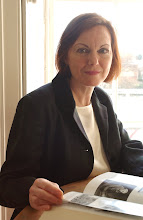 Sue Fisher’s 4x Grandfather, George Lewis, was a schoolmaster at an academy established in about 1818 by the Reverend Peter Fenn, in Hyde Street (no longer exists), off New Oxford Street, Bloomsbury. George Lewis died in November 1827, and on his death-bed obtained a promise from the Reverend Fenn to protect his wife and three children, George William Fenn Lewis (b.1819), Richard Caleb Fenn and Esther Georgiana.
Sue Fisher’s 4x Grandfather, George Lewis, was a schoolmaster at an academy established in about 1818 by the Reverend Peter Fenn, in Hyde Street (no longer exists), off New Oxford Street, Bloomsbury. George Lewis died in November 1827, and on his death-bed obtained a promise from the Reverend Fenn to protect his wife and three children, George William Fenn Lewis (b.1819), Richard Caleb Fenn and Esther Georgiana.However, the Reverend Peter Fenn was not all he seemed because on 11 September 1828 he was tried at the Old Bailey for deception and forgery. An article in The Times of 2 April 1828, tells the story:
‘It appears that about thirty years since (ie. c.1800), this man was ordained in holy orders, under the name of Fall, but why he subsequently changed his name, remains at present a mystery. Under the assumed name of Fenn, he was employed as a teacher in Kirkman's academy, Islington, and about ten years since purchased, on his own account, an academy in Bloomsbury, in which he succeeded beyond his most sanguine expectations. Unfortunately for him, and, we may say with truth, for the greatest body of his creditors, Mr Fenn was not satisfied with the profits derived from his school; he started also as a bill-broker, or rather discounter of bills, taking to himself (as others of that notorious class do) an exorbitant rate of interest. He thus made many bad debts, and was himself ultimately induced to resort to other usurers, who, like himself, though more wary, were not wanting in the rate to be charged to a brother miscreant. Spurred on by this connexion, he was led to commit the crime of forgery, and not only committed various forgeries himself, but he also made one of his tutors draw and accept bills in fictitious names. He also had the unmanly hardihood to involve his pupils in his guilt, for he has also, in a like manner, made them draw, accept, and indorse fictitious bills, and has circulated that kind of rubbish (among tradesmen only) to an enormous amount; and in order to give a greater facility to his criminal traffic, an account was opened at Messrs. Ransom's bank. This circumstance gave a degree of credit to his movements, and by an insinnating address, pretended friendship, and plausibility of manner, ingratiated himself with various tradesmen. He would in some instances pretend that he possessed a a bill for a large amount, such as £2000 on this nobleman or the other, and that he was himself to receive £200 or £300 from the pretended nobleman, for the accommodation, and consequently could afford to give the unsuspecting tradesman £50 for the loan of £500. The tradesman, confiding in the sanctified clergyman, has in many instances been thus duped to the tune of £2000 or £3000. Again, the clergyman would produce one of his concocted bills, and say "If you discount me this £200 at 5 per cent, I will take £50 worth of goods, and you shall draw a bill on me for the amount of the goods", so that this fellow has in many instances obtained £250 for one of his forged bills of £200.
It appears that the circumstances which led to his immediate detection, was his absenting himself from his home, together with several of his cheques (which he had post-dated) becoming due, which were returned, as a matter of course, by his banker, for want of funds. Under these circumstances a meeting was convened, and an intercepted letter coming to hand, disclosed the whole system, and that the Rev. gentleman had emigrated to Paris, under the assumed named of George Lewis.’
Sue says: I believe that Peter Fall who matriculated from Pembroke College Oxford in 1791 and went on to be a curate in Guernsey and Jersey is our Peter Fenn. His father is given as "John of Isle of Jersey, gent" but I have yet to confirm this. Why Peter changed his name from Fall (possibly spelt Falle, as is more common in the Channel isles) to Fenn is still a mystery. I always assumed that my 3x Grandfather's middle name of Fenn (George William Fenn Lewis) would turn out to be his mother's maiden name, not the vicar's surname!
Peter Fenn was sentenced to death (see his records at Old Bailey online) but this was commuted to transportation for life to Australia (there had been a petition for clemency in The Times). Charles Dickens was aware of his case as he mentions his name in a letter to the Daily News in 1846. Fenn had hoped to be sent to Botany Bay "where,by the employment of his literary talents, he calculates upon improving his condition". But unfortunately he was sent to "The Valley of the Swells", a penal colony where he was set to manual work. He was given a conditional pardon in 1845.
My 3x Grandfather, George William Fenn Lewis (b.1819) became a Thames waterman. The photograph above shows boats on the River Thames at Southwark in 1845. Southwark Cathedral is in the foreground.
